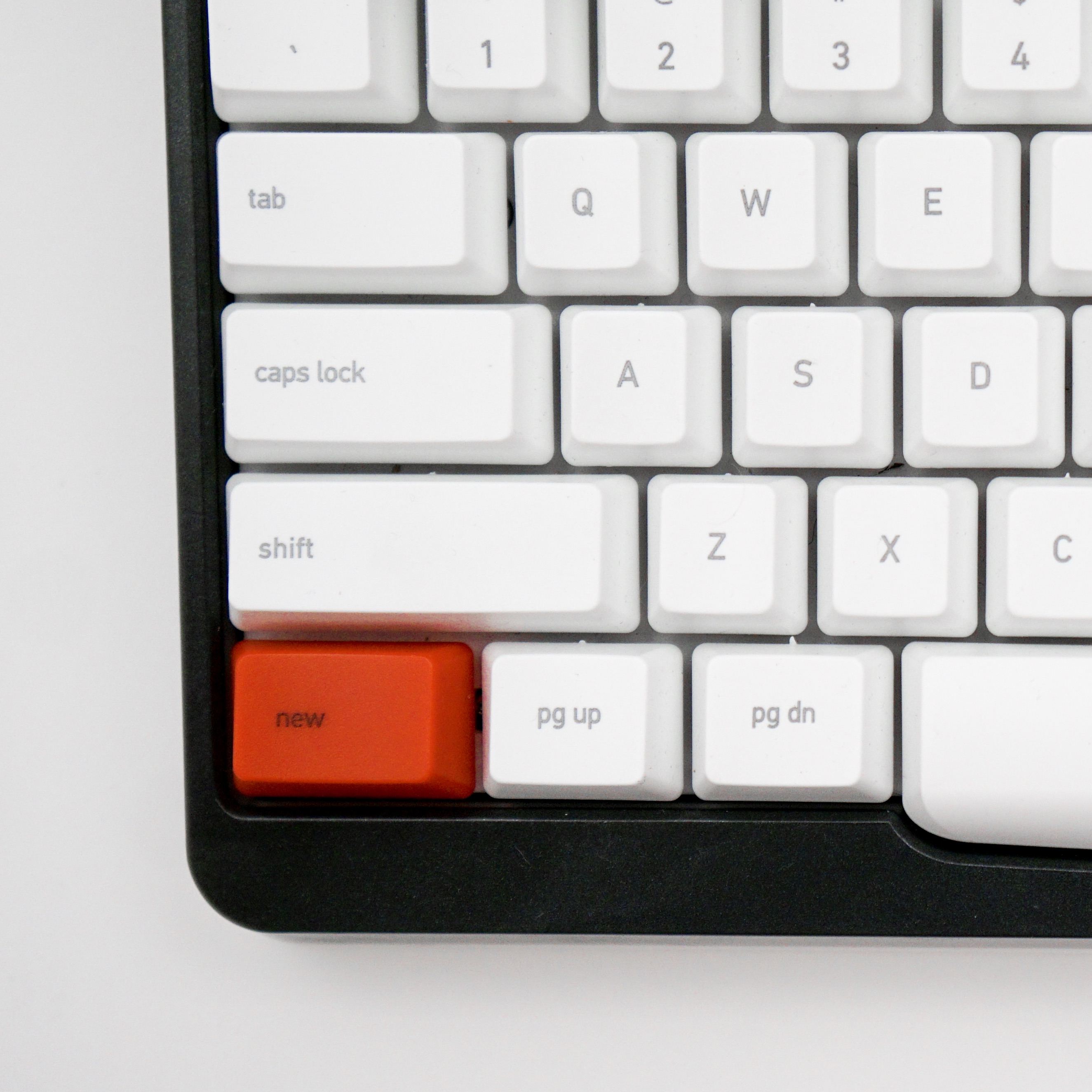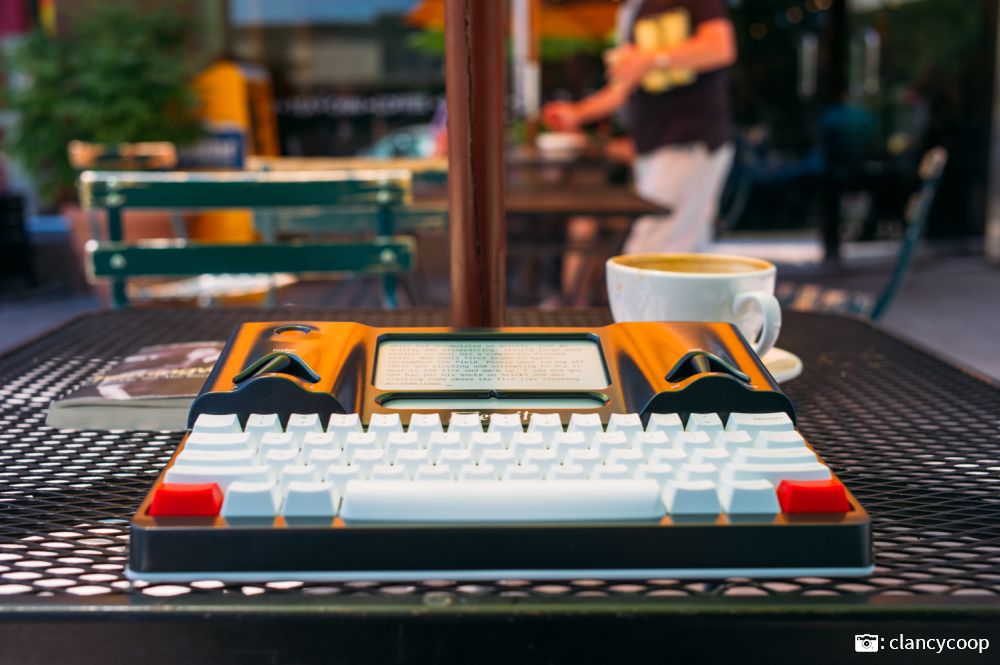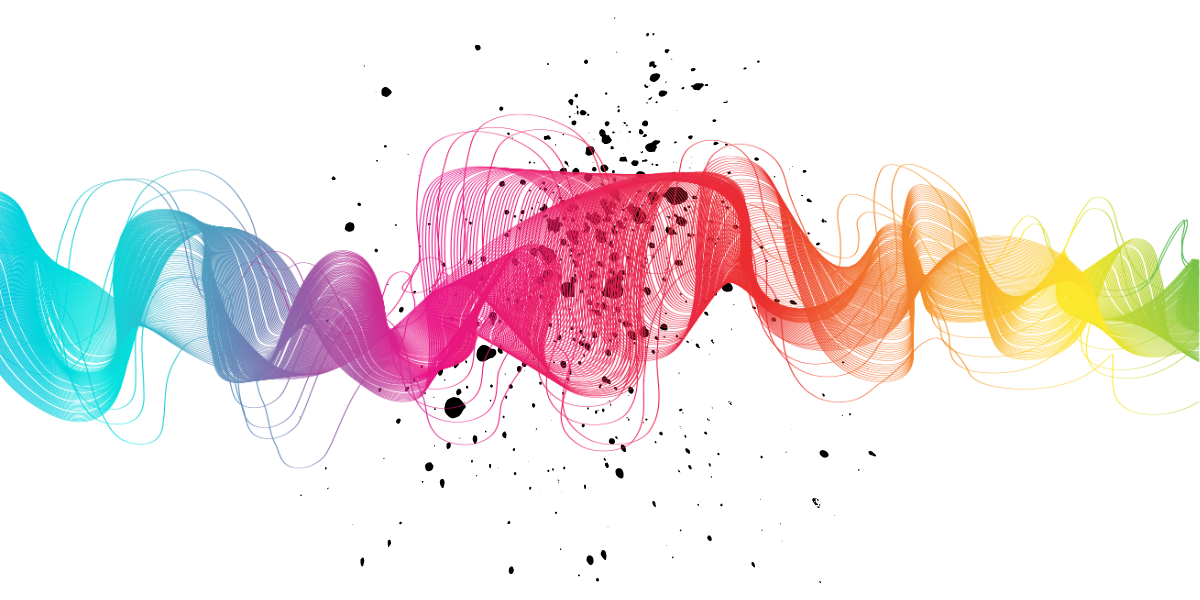Your Cart is Empty
As a writer, you’ve probably used a variety of different keyboards, and know that they’re not all created equal. Keyboards come in many different styles and choosing the right one can have a big effect on your typing speed, comfort, and accuracy. Some have traditional solid, clicky keys with switches inside them, some have modern flat, silent keys, and some fall halfway in between.
What kind of keyboard should you be using? In this article, we’ll look at the three main types of keyboards, what makes them different from each other, and which one is likely to be best for you.

These days, most desktop keyboards are membrane keyboards. Their name derives from their construction. Rather than each key being independent with an inbuilt mechanical switch, all the keys sit on top of a single plastic membrane that houses the electronic circuitry. Between the keys and the circuitry is a rubber sheet with domes that give the keys their characteristic bounce-back when you type. They’re popular because they’re light, cheap to produce, are relatively spill-resistant and give you a bit of tactile feedback.

If you’re typing on a modern laptop, chances are you have an island-style keyboard, popularly known as a chiclet keyboard because the square keys with radial corners look somewhat like Chiclets chewing gum. While there’s usually a membrane beneath these keyboards too, the rubber domes that are present beneath higher-profile keys are either omitted altogether or replaced with scissor switches or butterfly switches, which enable the use of very low, flat keys that can fit into thinner and thinner devices.

The main difference with a mechanical keyboard is that each key is a separate component with its own switch and metal spring. There are many different kinds of switches that can be used in mechanical keyboards, and each type gives a different user experience with varying levels of travel (the distance you have to press the key for it to register a stroke), bump (the level of tactile feedback) and noise (the click the key makes when depressed).
Most mechanical keyboards contain Cherry switches. While their patent for the switch design has recently expired, opening the way for other manufacturers to imitate it, Cherry is still considered the industry leader in keyboard switch technology. Their MX switch, which was first introduced to the market in 1983, is one of the most successful ever made. Cherry switches come in different colors, and each color has its own set of characteristics. The full range is wide, but there are three main variants.
These switches have a tactile bump and a loud click that occurs when the keystroke registers, and are favoured by those who like a more typewriter-esque experience. They only need to be depressed to the click point to activate the keystroke but require more force than the Red or Brown variants.
These switches are favoured by gamers because they have no tactile bump or noise and require less force to press, which is an advantage when you’re engaged in a fast-paced cyber-battle.
These are an excellent all-rounder switch – they require the lighter actuation force of the Reds but have the nice tactile bump of the Blues. They lack the Blues’ loud click, however, making them perfect for use in offices or coffee shops where you don’t want to annoy those around you with a constant flurry of clacky keystrokes.
People who convert to mechanical keyboards often become lifelong fans because of the satisfying typing experience and range of benefits they get from using them. What makes mechanical keyboards so good for writers?
There’s nothing worse than trying to type fast on a chiclet keyboard where all the keys are flat and close together, and you’re forever hitting the key beside the one you want with the edge of your finger. Like the keys on a traditional typewriter, mechanical keyboard keycaps tend to be nicely contoured to help your finger naturally hit the centre of the key as you type, resulting in fewer typos.
Mechanical keyboards require less force to type, and you don’t need to press the keys all the way down – only to the point of the click or the tactile bump. Membrane keyboards require you to “bottom out” each key complete the circuit, something that people often describe as a heavy, “mushy” typing experience, leading to fatigue in the fingers, hands and wrists.
Contoured, more responsive keys naturally lead to faster typing. Another benefit of mechanical keyboards is n-key rollover. Rollover is a technical term for how many simultaneous keypresses a keyboard can register accurately. Membrane keyboards often have a much lower rollover which results in “ghosting”. That’s when you’re typing flat out, your keystrokes overlap, and your keyboard registers extra keystrokes, resulting in additional “ghost” letters. Keyboards with n-key rollover can accurately register every keypress, regardless of how many keys you strike simultaneously, meaning you don’t have to slow down to improve accuracy or stop to fix ghosting typos.
Mechanical keyboards last a lot longer than their membrane counterparts. Rubber dome switches tend to lose their bounce after about five million keystrokes, and you’ll notice that some keys will become unreliable or stop working completely. In comparison, Cherry key switches are designed to last for fifty million keystrokes.
If you’ve got Cherry switches on your mechanical keyboard, you can swap out the keycaps for other styles. Gaming? Change your W, A, S, D keys to red, so they’re easier to locate quickly. Swap your function keys or numeric keypad to a contrasting color for extra style and visibility. Want to modify the feel of the keys? Grab a dampening kit to reduce the travel and key noise.

If you’re raring to write your next novel, article or poem on a mechanical keyboard, have a look at The Freewrite by Astrohaus - a smart typewriter that incorporates an industry-leading full-size mechanical keyboard into a portable device with an E-ink screen that works perfectly outdoors as well as indoors. A stand-alone writing tool, it contains none of the distractions of your desktop or laptop, but still has the ability to save your work to the Cloud. Designed especially for writers, the mechanical keyboard contains Cherry MX Brown switches which means not only will you be distraction-free, but so will everyone around you. Check out the Freewrite 2nd Generation Smart Typewriter for more information.
Related: Laptop vs. Freewrite
About the author:
Claire Wilkins is a freelance copywriter and editor from New Zealand. She loves to write about travel, health, home, and proper punctuation. After a career in financial services spanning almost three decades, Claire left the corporate world behind to start Unmistakable - her writing and editing business. She creates website copy, blogs, and newsletters for creative agencies and small businesses, and specializes in polishing existing content until it shines. In her spare time, Claire enjoys cloud-spotting, singing in the car and editing video.
Everyone has a pandemic story because it's hard to forget. I remember the quickness of it all — societal norms flipping, turning, and somersaulting, which still makes my head spin. "Stuff is gonna get weird," I remember telling my friend. "Especially art."
Right now, the choice for a writer to use artificial intelligence (AI) or not has been largely a personal one. Some view it as a killer of creativity, while others see it as an endless well of inspiration.
But what if, in the future, your choice had larger implications on the state of literature as a whole?
This is the question that’s being raised from a new study by the University of Exeter Business School: If you could use AI to improve your own writing, at the expense of the overall literary experience, would you?
Let’s explore some context before you answer.

The 2024 study recruited 293 writers to write an eight-sentence “micro” story. The participants were split into three groups:
Then, 600 evaluators judged how creative these short stories were. The results confirmed a widely accepted idea but also offered a few surprising findings.
Right off the bat, the reviewers rated the AI-guided stories as being more original, better written, and more enjoyable to read. (Interesting to note that they did not find them funnier than the fully human-inspired stories.)
This actually isn’t that surprising. Most writers know the “blank page dread” at the beginning of a project. Even as I write this, I can’t help but wonder, “If I had been tasked with writing an eight-sentence story, what the heck would I have written about?”
Many writers share this sense of needing to pick the “right” story to tell. And that uniquely human concept of perfectionism can end up actually inhibiting our creative process.
A prompt, then, can help us quickly clear this mental hurdle. To test this, I’ll give you one, courtesy of ChatGPT: “Write a story about a teenager who discovers a mysterious journal that reveals hidden secrets about their town, leading them on an unexpected adventure to uncover the truth.”
Can you feel your creative juices flowing already?
Since its release, AI has been celebrated for its ability to assist in idea generation; and this study confirms how effective using artificial intelligence in this way can be for writers — some, it seems, more than others.
It doesn’t feel great to judge a writer’s creative prowess, but for this study, researchers needed to do just that. Prior to writing their short stories, the writers took a test to measure their creativity.
Researchers found that those considered less creative did substantially better when given AI-generated ideas — to the point where getting the full five ideas from AI “effectively equalizes the creativity scores across less and more creative writers.”
This isn’t the case just for writing. Another study by the National Science Foundation Graduate Research Fellowship WZ also found that AI tools most benefit employees with weaker skills.
So is AI leveling the playing field between okay and great writers? It seems it may be. But before we lament, there’s one more finding that proves using AI isn’t all perks.
The researchers took a step back to look at all the AI-supported stories collectively. And what did they find?
The AI-assisted stories were more similar as a whole, compared to the fully human-written stories.
Additionally, when reviewers were told that a story was enhanced by an AI idea, they “imposed an ownership penalty of at least 25%,” even indicating that “the content creators, on which the models were based, should be compensated.”
This leads us to that all-important question about AI-assisted work: who owns the content?
According to Originality.AI, an AI and plagiarism detector, “When there’s a combination of AI and human-generated elements, the human elements may receive copyright protection if they meet the requirements.”
So right now, if a writer uses AI to generate ideas — but writes the content themselves — they retain rights to the work.
However, Originality.AI even admits that “the legal system is having a hard time keeping up” with the rapid adoption of artificial intelligence. Time will only tell what AI regulations will look like in a few years.
The researchers from the University of Exeter Business School study raise an interesting point about what the future landscape for writers may look like. If droves of authors begin using AI to come up with ideas, we may end up with a lot of well-written yet dime-a-dozen stories.
So will human beings choose the easier, but less diverse, path? Or will we stick to fighting through writer’s block armed with nothing but our own brain?
Or, a third option: can we somehow learn to harness AI to supercharge our writing process without sacrificing the wholly unique creativity that infuses human creation?
That’s one question that even ChatGPT can’t answer.
While AI has capabilities that range from coding to image generation, the model that excites — and terrifies — writers is the LLM. It won’t be long before we see the world’s first blockbuster novel, written entirely by an LLM. What does this mean for art, and writers in particular? Is it all doom and gloom? The answer is, of course, more complicated than yes or no.